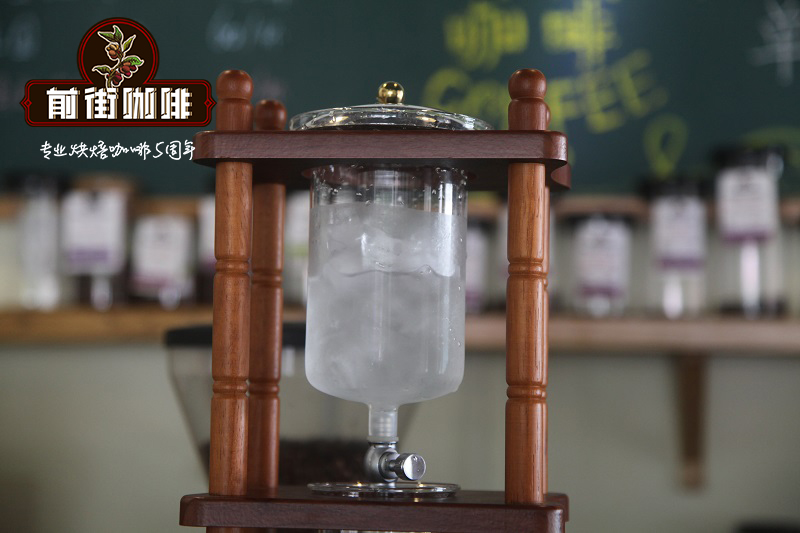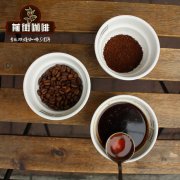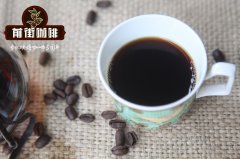What are the scoring criteria and items of coe? What does the coe Excellence Cup stand for? Coe Award winning Coffee Club

Professional coffee knowledge exchange more coffee bean information please follow the coffee workshop (Wechat official account cafe_style)
What does coe cup test mean? What are the scoring criteria and items of coe? What does the coe Excellence Cup stand for?
The full name of COE is Cup of Excellence, which translates into Outstanding Cup, extraordinary Cup or extraordinary Cup in Chinese. Every year, the organizer ACE (Alliance For Coffee Excellence) picks out thousands of coffees from member States, selects a batch of high-quality coffee through domestic cup test review, and then submits the selected coffee to the top 10 by internationally recognized cup test review, and these 10 lucky coffees will be auctioned online around the world to get a good price. It takes about three weeks from the initial domestic selection to the international cup to the final auction, but it can completely change the life of a coffee farm and put them on the international stage.
At present, the largest number of coffee-producing countries in Central and South America are COE members: Brazil, Guatemala, Nicaragua, El Salvador, Colombia, Costa Rica, Honduras and Mexico. Only Rwanda and Burundi come from Africa. Brazil and Colombia are among the top coffee producing countries in the world, so there are two COE competitions each year.
Published by the American Coffee Association (National Coffee Association). The 2005 National Coffee Beverage Development trend report found that coffee buyers, 48% of coffee gluttons, felt that taste / flavor uniqueness (taste; unique/ different flavor) was the factor they cared about most when buying. 33% of the main reasons for determining whether coffee is good or bad.
The second is the brand, price, baking style and so on. Highlight the necessity of coffee cup testing. Because planting, picking, processing and roasting all affect the flavor of coffee.
The cup test is to show the original flavor of coffee beans without any brewing skills, and it is an important skill to find out the characteristics of coffee.
Cup test (Cupping)
The so-called 'cup test' is like tasting red wine to objectively and generally judge the sweetness and sour taste, bitterness, aftertaste and aroma of coffee, as well as the quality of coffee.
The cup test is actually held in coffee producing and producing countries, and it is the most direct way to convey the unique flavor of coffee. When purchasing raw coffee beans in the place of origin, a cup test should be carried out to determine whether to buy it or not.
Cup test method
Here I would like to introduce you to the 'DISCOVERY cup method'.
(1) prepare props.
Coffee beans 10g x 3 cups
Prepare 2 coffee beans roasted before explosion. Grind with FUJIROYAL coffee grinder and R202 scale ⑥. )
A glass or container of the same size x 3
Boiled water (100cc) × 3
Special spoon for cup test
If not, spoons or spoons can be used instead.
Some acquaintances think the spoon is very useful! )
Timer
Water cup for cleaning cup and measuring key
Taste 3 cups of coffee for the same cup test spoon, and wash the coffee each time before using it in order not to mix the coffee with each other. )
A cup for removing lye and spitting coffee.
Put the coffee in your mouth and spit it into the cup after you feel its taste and aroma. )
Why prepare three cups of the same coffee?
If the coffee is tested with a cup of coffee, the coffee will not be graded as long as a defective bean is found in the coffee bean. Therefore, in order to more correctly carry out the 'cup test', one kind of coffee should be prepared for 3 cups.
Let's start the cup test now!
(2) smell the aroma of coffee powder in the cup first.
(the coffee is called "DRY" when it is divided into powder, and the state of boiling water is called "CRUST". )
First, feel the aroma of "DRY".
Put your hand over the mouth of the cup, shake it and you can smell the aroma of coffee.
(3) add 100cc hot water to each cup and time it for 3 minutes with a timer.
Smell the aroma of "CRUST" in the clock. Put your nose as close to the coffee as possible and slowly inhale the aroma.
(4) after 3 minutes, use a cup spoon to remove the coffee from the cup noodles.
In order to feel the aroma of the coffee and keep the nose close to the coffee, extend the cup spoon to the bottom of the cup and stir up slowly and widely for 3 times, damaging the surface of the coffee.
(5) remove lye and suspended coffee bean particles from the liquid surface with a cup spoon.
At this time, if there are too many suspended coffee beans, you may choke when inhaled, so try to get rid of them. )
(6) gently pick up the liquid with a cup spoon, put it into the mouth and inhale it in a fog to spread in the mouth, and then taste the sweetness, sour taste, bitterness, aftertaste, consistency and taste, quality uniformity and taste balance of the coffee.
It is easier to judge the taste when it spreads in the mouth in the form of fog.
Lean the cup spoon against the teeth in front of the lower row, slightly downward, and inhale with a strong breath.
Because inhaling hard may make a "beep -"whew -" sound like a whistle.
(7) observe the change of taste when it gets cold slowly.
Each degree of cooling shows the characteristics of coffee.
Be able to understand the taste of coffee,
Be able to inhale skillfully,
The most important thing is to repeat the cup test every day, remember all kinds of flavors, and form a habit.
The expression of coffee
The following is an expression about coffee.
A world very much like red wine.
The main purpose of cup test
1. Explore the original characteristics of coffee, including advantages and disadvantages
two。 Explore the roasting characteristics of coffee and find out the advantages that are acceptable to the market, including the bean blending model.
3. According to the cup test results, decide whether or not to purchase and make decisions.
Some suggestions on coffee planting and raw bean treatment, preservation and logistics were put forward.
Cup testing environment & facilities
Suitable environment
There's no smell.
Perfume, pungent smell, food aroma. )
The cup testing room should be clean, bright, comfortable and quiet (turn off your cell phone and don't discuss it when tasting)
Cup testing facilities:
Bean baking equipment (bean dryer, Agtron color card, bean grinder)
Cup measuring room
Cup test articles
Cup test articles
Water, heating equipment
Cup test coffee beans, raw beans, control beans
Electronic scale, bean plate, bean grinder
Cup spoon
Glass or ceramic cup (to be mixed with powder), cup lid
Tables, chairs, whiteboards
Cup meter, handwriting board, pencil, small fluorescent lamp, color plate
Matters needing attention in cup test
The night before,
Don't eat stimulating food, get enough sleep and relax.
On the same day
Fasting irritants (garlic, onions, chili peppers … ), chewing gum
Ban perfume, cologne and flavored cosmetics
Prohibition of mouthwash and dental floss containing cleaning ingredients
Instant attention and stable mood
Cup pre-test correction
Objective:
Because everyone's feeling intensity of taste and smell is different, especially the cognition of smell is also different, so basic correction should be made before cup test, which can be used as the benchmark of cup test.
Taste correction: sour, sweet, salty (bitter)
Olfactory correction: 36
Common aroma of growing coffee (Le Nez du Caf é)-France
(for beginners, there are 7 kinds of 5Mui per day)
Cup Calibration-Taste (COE Specification)
Salinity test (strong, medium, weak)
NaCl 0.05%, 0.1%, 0.2%
Acidity test (strong, medium, weak)
Citric acid 0.005, 0.01%, 0.02%
Sweetness test (strong, medium, weak)
Sucrose 0.5%, 1%, 2%
Cup test comparison
At present, there are more common cup testing processes in the world, such as the American Fine Coffee Association (The Specialty Coffee Association of America, SCAA) and coffee competition organizations (Cup of Excellence, COE).
Comparison of SCAA and COE test items
SCAA
CoE
one
Fragrance / Aroma
Aroma (fragrance is not scored)
two
Flavor
Clean cup cleanliness
three
Aftertaste
Sweetness sweetness
four
Acidity
Acidity acidity
five
Body
Mouth feel has a touch in his mouth.
six
Uniformity consistency
Flavor flavor
seven
Balance
Aftertaste aftertaste
eight
Clean cup
Balance balance degree
nine
Sweetness
Overall overall flavor
ten
Overall
Total score
one hundred
64 + 36 (basic score)
This article adopts COE process and grading method.
COE cup testing process
COE scoring method
Cup test coffee beans
The baking procedure stipulates that:
Bake the beans within 24 hours before the cup test, and place them for 8 hours after packing.
Baking degree:
Mainly light baking, Agtron/SCAA tile # 65 color color 55 (color card)
Baking time:
8Murray for 12 minutes, no scorched objects
Coffee cup brewing standard
Dry cleaning bean grinder before grinding
Water quality TDS regulations: 125--175ppm
(total dissolved solids Total Dissolve Solids)
Ratio of water to powder:
1: 19-1: 20 (Whip W)
Cup testing technique
Smell dried incense (within 10 min after grinding)
Inject hot water (93 ℃, within 10 min after grinding)
Smell damp incense (within 15 min after grinding)
Slag breaking technique (surface disturbance)
Sipping (high, medium and low temperature)
A small sip of 5 murals 10 cc
The length of stay is 5 Murray for 10 seconds.
The interval time is 15 Murray 10 seconds.
The expression of coffee
The following is an expression about coffee.
A world very much like red wine.
■ Aroma aroma
Spicy, herbal, nutty, floral,
Caramel, vanilla, red wine, fruit, grass,
Dry, green, muddy, fermented, charred, smoked
■ Acidity is sour and refreshing.
Smooth, smooth, bright, refreshing, soft, sweet, if real,
Like apples, lemons, oranges, peaches, mangoes,
Like yogurt, strong, irritating, vinegar
■ Body consistency taste
Greasy, buttery, creamy, greasy, slender,
Smooth, rich, silky, velvet, watery, light
■ Aftertaste Yu Yun
Long-lasting, reverberating, mild, bright, sweet, immediately disappearing, astringent
Clarity of ■ Clean
Clear, free of impurities, transparent, turbid
Important Notice :
前街咖啡 FrontStreet Coffee has moved to new addredd:
FrontStreet Coffee Address: 315,Donghua East Road,GuangZhou
Tel:020 38364473
- Prev

What does coe cup test mean? What is the difference between the scoring items of scaa and coe in the cup test? Coe
Professional coffee knowledge exchange more coffee bean information please follow the coffee workshop (Wechat official account cafe_style) coe cup test what does it mean? What is the difference between the scoring items of scaa and coe in the cup test? What are the score items of coe? COE (Cup of Excellence) International Coffee Cup Test, which originally belonged to the American Fine Coffee Association (SCAA), was later independent.
- Next

How do you describe the flavor of 90 + Hachilla coffee beans? what exactly is Hachilla coffee?
Professional coffee knowledge exchange more coffee bean information please follow the coffee workshop (Wechat official account cafe_style) 90 + Ninety Plus ● Hachira N2 HACHIRA HACHIRA Coffee was created from 2006-2008 with S.A Bagersh Aricha, with a great fruity and floral aroma as well as quite concentrated Elderberry, BlackBerry
Related
- Detailed explanation of Jadeite planting Land in Panamanian Jadeite Manor introduction to the grading system of Jadeite competitive bidding, Red bid, Green bid and Rose Summer
- Story of Coffee planting in Brenka region of Costa Rica Stonehenge Manor anaerobic heavy honey treatment of flavor mouth
- What's on the barrel of Blue Mountain Coffee beans?
- Can American coffee also pull flowers? How to use hot American style to pull out a good-looking pattern?
- Can you make a cold extract with coffee beans? What is the right proportion for cold-extracted coffee formula?
- Indonesian PWN Gold Mandrine Coffee Origin Features Flavor How to Chong? Mandolin coffee is American.
- A brief introduction to the flavor characteristics of Brazilian yellow bourbon coffee beans
- What is the effect of different water quality on the flavor of cold-extracted coffee? What kind of water is best for brewing coffee?
- Why do you think of Rose Summer whenever you mention Panamanian coffee?
- Introduction to the characteristics of authentic blue mountain coffee bean producing areas? What is the CIB Coffee Authority in Jamaica?

